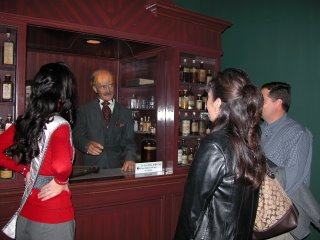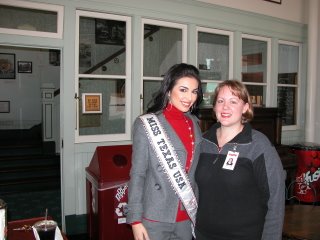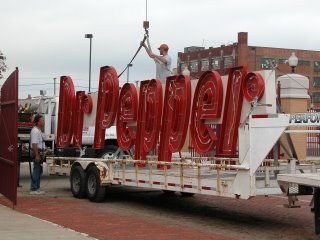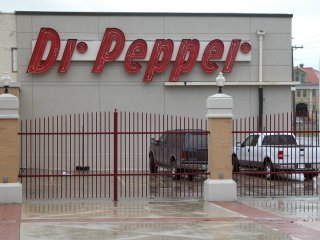Whew! The new year has already been a whirlwind, and it has only just begun! A lot has happened here at the DPM. The newest exhibit of the year -- Flava of Pop! America's Sweetest Concoction -- opened on January 12 to rave reviews. It features a mad scientist lab, and cases on advertising versus taste, color versus taste, ingredients, and different flavors. It is colorful and eye-catching, and interactive with taste-testing every Friday between 1:00 and 2:00. Come on in and check it out!! Here are some teaser pics below...


NEW PODCAST!!! The newest podcast of the year is now posted on the podcast page, this page, our MySpace page, and now available on the hompage of the Dr Pepper Museum's website! Basically, there is no excuse for you not checking it out! This podcast is our first using Garage Band, which ROCKS MY SOCKS!!! It is so so easy, and has about a billion sound effects etc. to choose from to enhance the podast experience. However, if you have a PC, I still recommend Audacity, which is the program we were using before. Go listen to the Mac-type magic!!!
We also have passed the "100 Friends" mark in MySpace, which we are very excited about. Wonderboy, the Super Genius became our 100th friend a couple of weeks ago! Yay for you Wonderboy!!! We have 118 friends at the moment, and our goal is to reach 200 sometime soon, so please please help us! We love our loyal fans, so let us know you love us!!
The following is amazing, and totally worth making the blog, so let me introduce you to Ryan Thompson, who emailed us about his tatoos. This is the kind of dedication I am talking about people! These are pics of Ryan's tatoos. They are awesome.


This week so far I have been working on a loan for the Travel Channel show John Ratzenberger's Made in America. They are going to do a short segment on Dr Pepper, so be on the watch for that coming out this spring.

As usual, the technology around here is advancing by leaps and bounds. At the beginning of this year I moved my Dell computer that I have always worked on to the collection for Carrie to work on, and the Mac from downstairs became my main computer. I am VERY excited about this because of all the amazing programs I have at my fingertips now, but of course, there was one downside. The program we use to catalog our collection is not Mac compatible, and it became clear to me rather quickly that I was going to have to figure out a way to access Past Perfect (the program we use) to be able to do my job. Amazingly, doing the website, blog, MySpace, and Podcast is not the main thing I get paid to do, so not being able to use Past Perfect was a problem I had to figure out. I had always heard that it is possible to share a monitor, keyboard, and mouse between two CPUs, but it always seemed too difficult to figure out, or like it would be too expensive. I did some research and found that Belkin makes a product called the Flip, which has a little button that switches between the two computers. Eureka! I had found the answer. It was not as easy as it seems because of cord translation issues between the Mac and PC, but this morning around 11:00 it finally all came together. To make it work we had to buy the Belkin Flip, a new VGA monitor cord, and a DVI to VGA adapter. All of this ran us under $100, and now with the quick press of a button I can go from a Mac to a PC like magic. It is now called the "Magic Button" and I LOVE LOVE it. Technology is A-MA-ZING!!!!!
Last week and this week we have also been hard at work finishing up the details for the move to the new building, which hopefully will happen in mid-March. Picking out new furniture and assigning plugs is hard work, but EXTREMELY exciting. As February is upon us, watch out for more updates on how the move preparations are going. We are about to be the best Dr Pepper Museum we can be!!! More to love!!!
~Mary Beth




























































